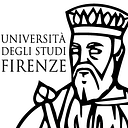Script as Image: Visual Acuity in the Script of Poggio Bracciolini
From Firenze University Press Book: Poggio Bracciolini and the Re(dis)covery of Antiquity: Textual and Material Traditions
Philippa Sissis, University of Hamburg, Germany
That means that there is much more to
see on a written page than just text.
Das heißt, dass an einer geschrieben Seite
viel mehr zu sehen ist als der Text.
(Gumbert, 1992: 283)
The question of the materiality and visuality of books, beyond the concern with the texts they contain, arises in connection with Poggio Bracciolini’s early work. For even before he could make his important manuscript
discoveries during the Council of Constance (1414–1418), before he wrote
his own literary works (his earliest work De avaritia was written between
1428 and 1429), before he followed in the footsteps of his mentor Coluccio Salutati (1331–1406, chancellor 1375–1406) and his friend Leonardo Bruni (1369–1444, chancellor 1427–1444) as chancellor of Florence
(1453–1458), he decisively shaped the appearance of the humanist book.
«There was no humanism without books», writes Martin Davies on
Italian Renaissance Humanism. He specifies: «[Books] were the prime
material on which the movement was founded and the natural medium
through which it was transmitted» (Davies, 1996: 47). Especially for the
humanists Poggio, Salutati, and Niccoli, all of whom were particularly interested in grammar, the work on the book seems to have been, as per
philological research tradition, above all work on the text, which they
read, studied, corrected and reconstructed (Gombrich, 1976).
But their activity in relation to the manuscript as an object — the book
itself — can be described primarily as searching, collecting, copying, and
disseminating. On the one hand, the manuscript represents the vessel in
which the humanists find the text, and which they seek to free from the
traces of its transmission by removing elements of its presentation, transmission faults, and other elements that belong to the ancient original.
On the other hand, however, they transmit their restored text in the same vessel, because the revised text is finally presented to the public as a manuscript.
The script on the individual pages of the manuscript — developed
by these early humanists, using older models and trials of Petrarch and
others — and its interaction with other elements of the mise-en-page such
as decorated initials, hierarchies of different scripts, and letters or even
page margins, become a medium for the self-presentation of a humanistic
consciousness inscribed in the reproduction of the revised texts and thus
a visual paratext on the ancient authors.
DOI: https://doi.org/10.36253/978–88–6453–968–3.10
Read Full Text: https://fupress.com/capitoli/script-as-image-visual-acuity-in-the-script-of-poggio-bracciolini/4363
